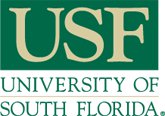Below is a summary of the abstract you submitted. Presenting author(s) is shown in bold.
If any changes need to be made, you can modify the abstract or change the authors.
You can also download a .docx version of this abstract.
If there are any problems, please email Dan at dar78@pitt.edu and he'll take care of them!
This abstract was last modified on March 16, 2021 at 2:29 p.m..

Research on bacteriophages is significantly important due to its efficient use in modern biotechnology and phage therapy. Along with isolating and annotating the bacteriophage genomes, it is also important to analyze the genes for possible function. The purpose of this research experiment was to investigate two phage traits for gene 83 from bacteriophage Girr’s genome: cytotoxicity, that causes lysis of the host cell, and defense immunity, that results in protection of the host from infection by similar phages. Bacteriophage Girr from subcluster F1, is a lytic phage that belongs to Siphoviridae family. Its genome is 57,754 base pairs long with a total of 103 genes. Particularly, gene 83 from Girr’s genome is 243 base pairs long and has been previously classified as a no known function gene. It is further categorized into Pham 22718, which also consists of 115 other members (phages are grouped into clusters based on their Pham similarity). However, it did not match (>= 200 alignment score) with any other gene across all the annotated genomes. The methodology for this research experiment included amplification of gene 83 via polymerase chain reaction (PCR) and assembling it into plasmid pExTra via isothermal assembly. The amplification of pExTra with gene insert was carried out initially via Escherichia coli transformation and selected for on Kanamycin plates. The process of colony PCR allowed to verify the presence of the insert. The electroporation of host bacteria M. smegmatis was carried out with pExTra-gene insert complex, and molecule anhydro-tetracycline (aTc) was used to induce expression of the gene. It was observed from the results of the cytotoxicity and immunity assay that gene 83 was non-toxic to the host and did not appear to protect the cell form a secondary bacteriophage. However, these results are inconclusive and further research should investigate the protein-protein interactions that causes these phenotypic changes. It is also important to carry out DNA sequencing for possible mutations and utilize HIS-tagging (and western blots) to check the expression levels of the gene. We thank Danielle Heller, Vic Sivanathan and the SEA GENES team for support of this project.

